Construction of the building started in in January 2003 and in December 2003 it was finished. House architecture is based on Jan Marcin Szancer (famous Polish artist and child books illustrator) and Per Dahlberg (Swedish painter living in Sopot) pictures and paintings.
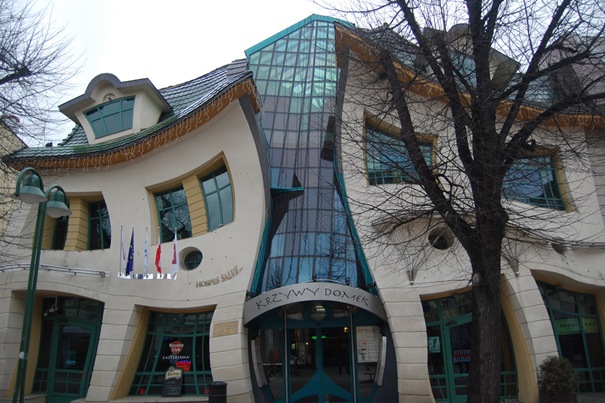
2. Hundertwasser Building: Darmstadt, Germany
The Hundertwasser house “Waldspirale”--”Forest Spiral”--was built in Darmstadt between 1998 and 2000. Friedensreich Hundertwasser, the famous Austrian architect and painter, is widely renowned for his revolutionary, colourful architectural designs which incorporate irregular, organic forms. This structure with 105 apartments wraps around a landscaped courtyard with a running stream. Up in the turret at the southeast corner, is a restaurant and bar.
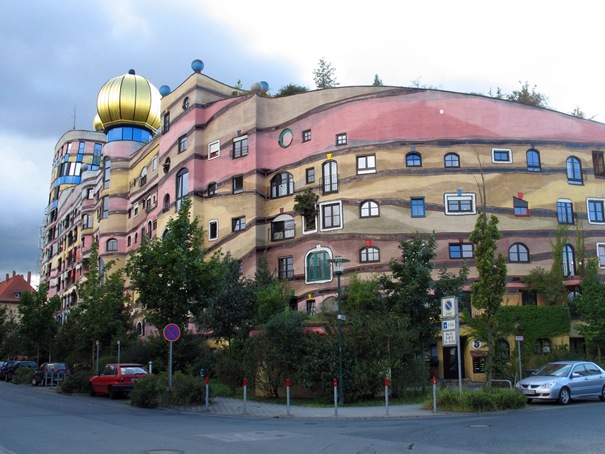 Image via: Kikos Dad
Image via: Kikos Dad3. The Torre Galatea Figueras: Spain
The museum houses the largest collection of Salvador Dali works – paintings, sculptures, collages, mechanical devices and other curiosities, as well as a small selection of works by other artists Dali liked.
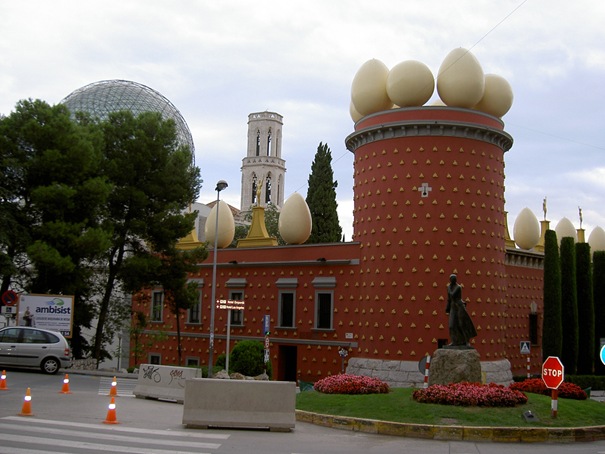
4. Ferdinand Cheval Palace: France
Le Palais Ideal is one of the most popular examples of naive art architecture, built by Ferdinand Cheval, a French Postman, over a period of 33 years. Cheval began building this in April 1879 and, while on the job, he tripped over a stone and was impressed by its unusual shape.
Inspired by the stone, he returned the following day and started gathering more rocks and putting them in his pockets.
With no architectural skills whatsoever, Cheval managed to build his Ideal Palace, combining several styles and using the Bible and Hingu mythology as inspiration. He spent 20 years on the outer walls alone, binding the stones together with lime, mortar and cement and decorating them with all sorts of chapel and temple models. His palace is recognized as a masterpiece and is now a cultural landmark and one of France’s popular tourist attractions.
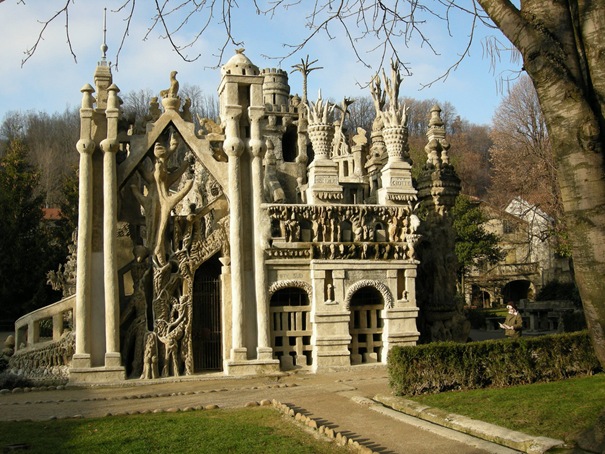 Image via: Mélisande*
Image via: Mélisande*5. The Basket Building: Ohio
The Longaberger Basket Company building in Newark, Ohio might just be a strangest office building in the world. The 180,000-square-foot building, a replica of the company’s famous market basket, cost $30 million and took two years to complete. Many experts tried to persuade Dave Longaberger to alter his plans, but he wanted an exact replica of the real thing.
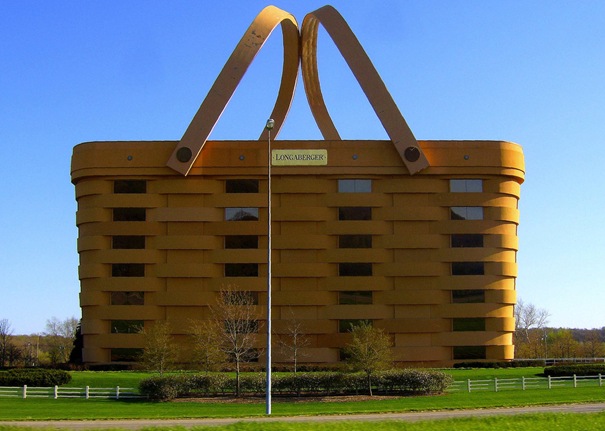
6. Kansas City Public Library: Missouri
This project, located in the heart of Kansas City, represents one of the pioneer projects behind the revitalization of downtown. The people of Kansas City were asked to help pick highly influential books that represent Kansas City. Those titles were included as ‘bookbindings’ in the innovative design of the parking garage exterior, to inspire people to utilize the downtown Central Library.
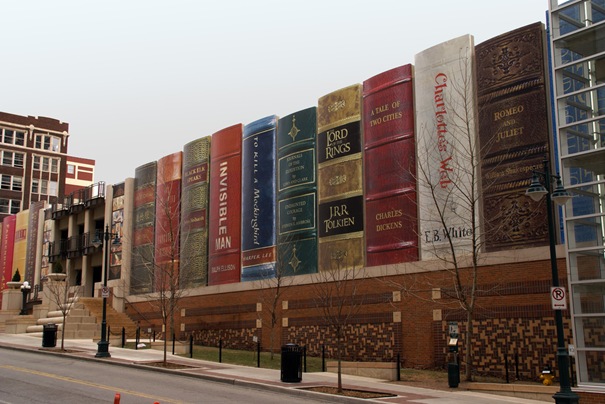 Image via: jonathan_moreau
Image via: jonathan_moreau7. Habitat 67: Montreal
Expo 67, one of the world’s largest universal expositions was held in Montreal. Housing was one of the main themes of Expo 67. The cube is the base, the mean and the finality of Habitat 67. In its material sense, the cube is a symbol of stability. As for its mystic meaning, the cube is symbol of wisdom, truth, moral perfection, at the origin itself of our civilization. 354 cubes of a magnificent grey-beige build up one on the other to form 146 residences nestled between sky and earth, between city and river, between greenery and light.
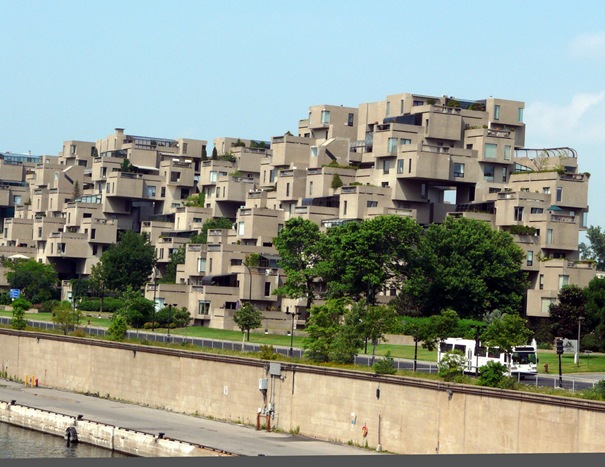 Image via: ken ratcliff
Image via: ken ratcliff8. Cubic Houses: Rotterdam, Netherlands
The original idea of these cubic houses came about in the 1970s. Piet Blom has developed a couple of these cubic houses that were built in Helmond. The city of Rotterdam asked him to design housing on top of a pedestrian bridge and he decided to use the cubic houses idea. The concept behind these houses is that he tries to create a forest by each cube representing an abstract tree; therefore the whole village becomes a forest.
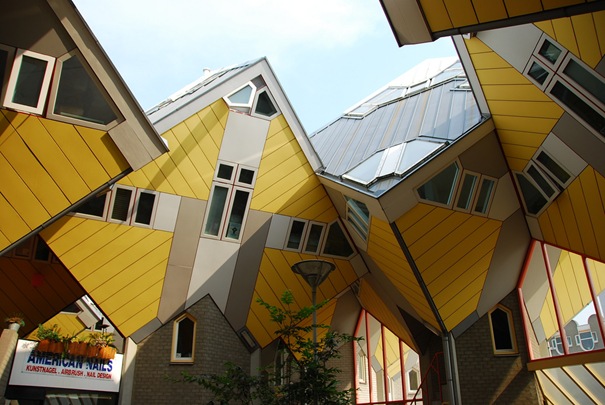 Image via: vpzone
Image via: vpzone9. Chapel in the Rock: Arizona
The unique architecture and location of the Chapel of the Holy Cross are the inspirations of Marguerite Bruswig Staude, who, on a trip to New York City in 1932, observed that a cross could be seen in the newly constructed Empire State Building when viewed from a certain angle; she was inspired to built a church based on that design.
Staude kept an eye out all over Europe and the USA for the ideal location, and she was especially struck by the beauty of Sedona. She decided to build her chapel here, which would be "a monument to faith, but a spiritual fortress so charged with God, that it spurs man's spirit godward." The Chapel of the Holy Cross was completed in April 1956.
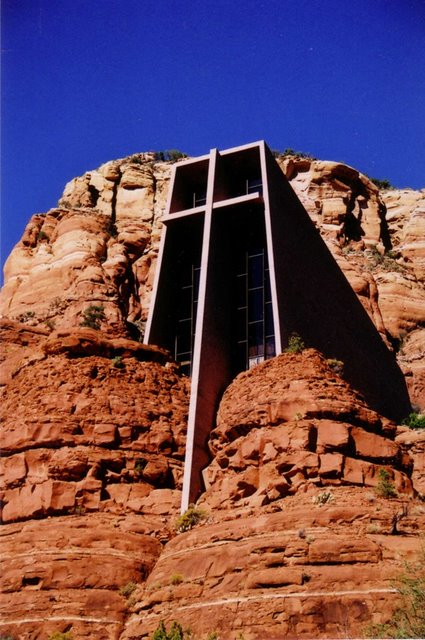 Image via: santanartist
Image via: santanartist10. Dancing Building: Prague
The Dancing House, aka Ginger & Fred, is the nickname given to the Nationale-Nederlanden building in Prague, Czech Republic at Rašínovo nábřeží. It was designed by Croatian-Czech architect Vlado Milunić in co-operation with renowned Canadian-American architect Frank Gehry on a vacant riverfront plot. The very non-traditional design was controversial at the time because the house stands out among the Baroque, Gothic and Art Nouveau buildings for which Prague is famous and it doesn't accord well with these architectural styles. Gehry originally named the house as Fred and Ginger--after famous dancers Fred Astaire and Ginger Rogers--because the house resembles a pair of dancers. The nickname is now very rarely used; moreover, Gehry himself was later "afraid to import American Hollywoodkitsch to Prague", so he refused his own idea.

11. Erwin Wurm: House Attack: Viena, Austria
Due to the ‘House Attack’ by famous Austrian sculptor Erwin Wurm the Vienna Museum of Modern Art (MUMOK) got into the list of the strangest buildings in the world. It seems like the house fell from the sky and landed in the center of the Austrian capital dashing right into the building of MUMOK. A little house, hanging upside down on its roof, attracted a lot of tourists’ attention all over the world in the end of 2006, when it was specially installed for Erwin Wurm’s exhibition taking place in the museum.
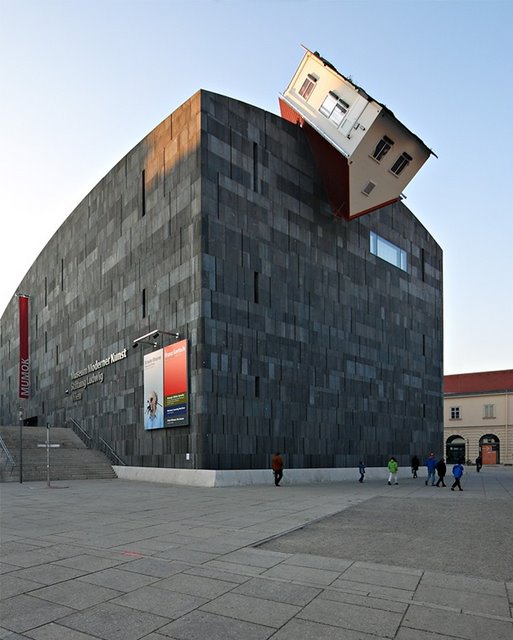
12. Gherkin Building: London
30 St Mary Axe, formally the Swiss Re building, and informally the Gherkin Building, is a skyscraper in London's financial district. With 41 floors, the tower is 591 ft tall, and stands on the site of the former Baltic Exchange, which was extensively damaged in 1992 by the explosion of a bomb placed by the Provisional IRA. After the plans to build the Millennium Tower were dropped, 30 St Mary Axe was designed by Norman Foster and Arup engineers, and was erected by Skanska in 2001–2003. The building has become an iconic symbol of London and is one of the city's most widely recognised examples of modern architecture.
 Image via: Lawrie Cate
Image via: Lawrie Cate13. Nord LB building: Hannover, Germany
Behnisch, Behnisch & Partner's futuristic headquarters for the German bank Nord/LB has only recently been completed and is still baffling the neighbours. Essentially lots of glass and steel boxes stacked on top of each other, the building was designed to house the company's 1,500 Hanover staff in a comfortable and eco-friendly environment, reducing carbon dioxide emissions and optimising the use of natural daylight. Highlights include a staff restaurant with a roof in the shape of butterfly wings and a 20m tower made from material that changes colour according to the position of the sun.
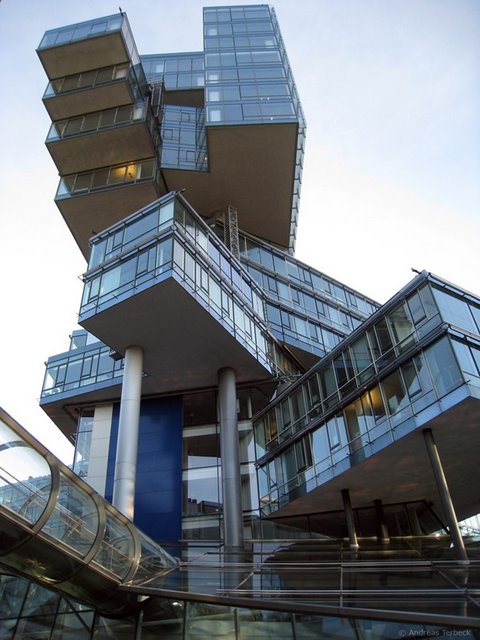

You do know that the Longaberger HQ has heated handles so ice doesn't form on them.
ReplyDelete